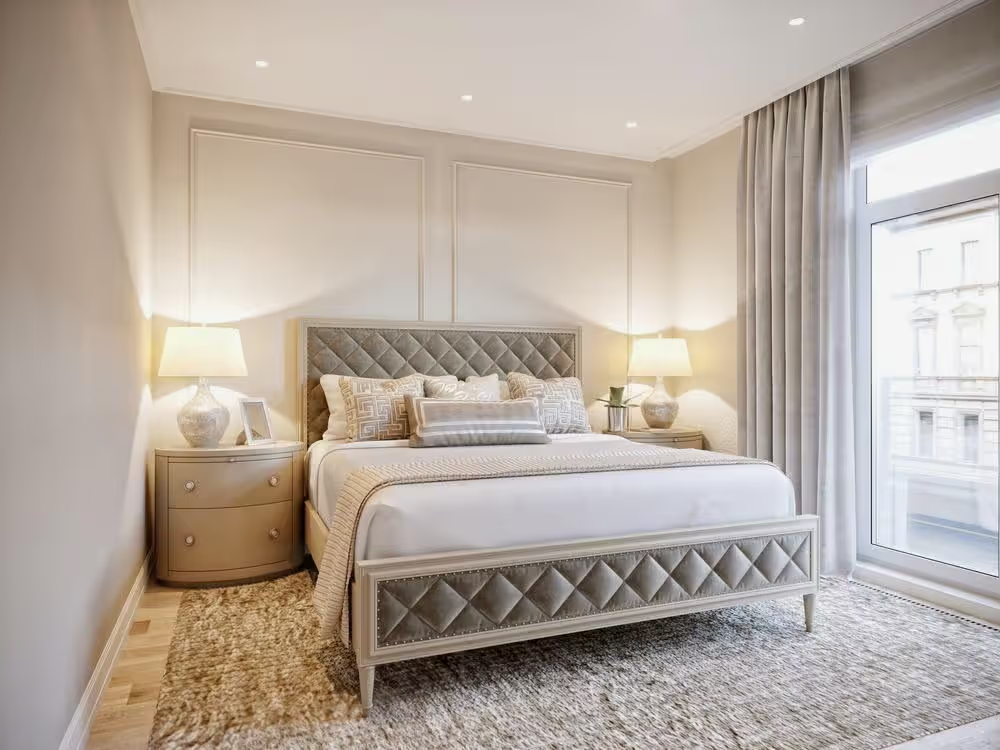Minimalistic living room design is more than just a decor trend—it’s a lifestyle. At its heart, minimalism embraces the idea that “less is more,” focusing on simplicity, functionality, and serenity. But simplicity doesn’t mean sacrificing style or comfort. A minimalistic space can be warm, inviting, and full of personality when designed thoughtfully. Let’s explore the key principles of minimalistic living room design and how you can create a stunning, clutter-free space.

image credit: House Designer
The Essence of Minimalism: Less is More
Minimalistic design is rooted in the principle of decluttering and simplifying. It’s about creating a serene environment by stripping away the unnecessary and focusing on what truly matters. Begin by assessing your living room—what do you love, what do you use, and what can you let go of? Decluttering not only opens up physical space but also creates a sense of mental clarity.
The Art Behind Minimalistic Design
Minimalism isn’t a modern invention—it’s a movement with deep artistic roots. Emerging in the 1960s, this design philosophy was inspired by the De Stijl art movement, which celebrated clean lines, simple forms, and functionality. Minimalism in interiors draws from this legacy, combining artistic elegance with everyday practicality.
Designing a Minimalistic Living Room
Neutral Colour Palette: Calm and Tranquility
A neutral colour palette is the cornerstone of minimalistic design. Think whites, eggshell tones, soft greys, and beiges that create a sense of serenity and spaciousness. In our featured living room, white walls, natural wood finishes, and subtle textures come together to evoke warmth and elegance.
Tip: Use these shades for walls, furniture, and decor, and add a touch of depth with contrasting materials like wood or stone.
Clean Lines and Simplicity

image credit: House Designer
Minimalism celebrates clean, uncluttered lines. Choose furniture with sleek, straightforward designs that avoid excessive embellishments. Think of sculptural chairs, a simple yet elegant coffee table, and understated lighting fixtures. In our living room project, each piece was selected with intention—showcasing clean lines and timeless craftsmanship.
Quality Over Quantity
Minimalism prioritises quality over quantity. Instead of filling the room with numerous decor items, invest in a few high-quality pieces that are built to last. Whether it’s a curved sofa or an iconic armchair, these investments enhance the space and save you money in the long run.
Thoughtful Decor: Adding Personality Without Clutter
Minimalistic doesn’t mean void of personality. Add a few carefully chosen decor elements that reflect your style. A statement artwork, lush green plant, or textured throw can enhance the room without overwhelming it.
Pro tip: Stick to decor that complements the neutral palette and overall theme, keeping the space cohesive.
Maximising Natural Light
Natural light is the secret weapon of minimalistic design. Use sheer curtains or blinds to let sunlight flood the room, enhancing the sense of openness. Mirrors can be strategically placed to reflect light, making the space feel even larger and more inviting.
Multi-Functional Furniture: Form Meets Function

Minimalist Living Room Ideas for a Stylish and Clutter-Free Space
Minimalistic living room design isn’t about limitations—it’s about freedom. By focusing on simplicity, functionality, and high-quality pieces, you can create a space that’s both stylish and peaceful. Whether it’s clean lines, a neutral palette, or carefully selected decor, minimalism allows you to design a home that truly feels like a sanctuary. At House Designer, we’re passionate about helping you bring these principles to life in your own living room.







